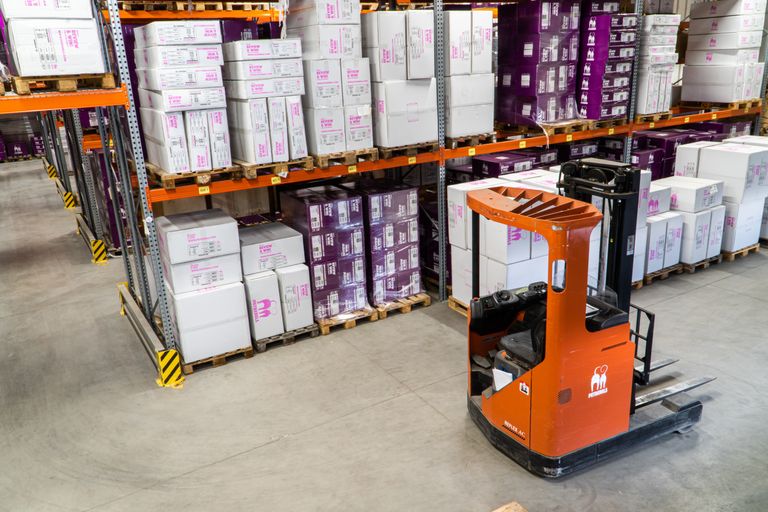Hello, everyone! Welcome to my blog!!
Today, I wanna deliberate on this topic "Inventory out of stock tracking system". It may interest you to know more about what this topic encompasses. we all know what inventory is all about, but incase you don't know, just a quick one, let me define it...
What is an Inventory?
Inventory refers to the collection of goods, materials, or products held by a business for the purpose of sale, production, or distribution. It represents the stock of items that a company holds at a specific point in time as part of its operations. Inventory can exist in various forms, including raw materials, work-in-progress (partially completed products), and finished goods ready for sale.
Inventory serves as a buffer between the production process and customer demand. It allows businesses to meet customer needs promptly without delays caused by production or procurement lead times. Managing inventory effectively is crucial for businesses to balance costs, maximize sales, and ensure customer satisfaction.
Inventory can be categorized into different types based on its nature and purpose. Here are some common types of inventory:
Raw Materials: These are the basic materials that are used in the production process but have not undergone any transformation. Raw materials inventory includes items such as steel, wood, fabrics, chemicals, or any other components needed to manufacture products.
Work-in-Progress (WIP): Work-in-progress inventory consists of partially completed products that are in various stages of the production process. It includes items that have undergone some level of processing but are not yet considered finished goods.
Finished Goods: Finished goods inventory represents products that are fully manufactured and ready for sale or distribution. These are the end products that are available for customers to purchase.
Maintenance, Repair, and Operations (MRO): MRO inventory includes items required for day-to-day operations, maintenance, or repair of equipment and facilities. It can include spare parts, tools, lubricants, cleaning supplies, and other consumables necessary to keep operations running smoothly.
Safety Stock: Safety stock refers to the additional inventory maintained as a precautionary measure to mitigate uncertainties in demand, supply chain disruptions, or lead time variations. It acts as a buffer to avoid stockouts and ensure smooth operations.
Accurate inventory management is essential for businesses to optimize costs, prevent stockouts or overstocking, streamline production and procurement processes, and provide excellent customer service. Effective inventory control systems and techniques, such as just-in-time (JIT) inventory, economic order quantity (EOQ) calculations, and demand forecasting, help businesses maintain the right balance of inventory levels to meet customer demand while minimizing carrying costs.
Having known what inventory is all about, let's deep dive into what we have for the day.
What is Inventory Out of Stock (OOS) Tracking System?
An inventory out-of-stock tracking system is a software-based solution that enables businesses to monitor and manage their inventory levels in real-time. This system provides visibility into the availability of products or goods, alerts when stock levels fall below a certain threshold, and helps businesses take proactive measures to prevent stockouts.
The main objective of an out-of-stock tracking system is to ensure that businesses have adequate stock levels to meet customer demand and avoid situations where products are unavailable for purchase. By tracking inventory levels, the system can identify when stock quantities are running low, allowing businesses to take timely actions such as initiating reorders or adjusting production schedules.
Here are some key features and functions typically found in an inventory out-of-stock tracking system:
Real-time Monitoring: The system continuously monitors inventory levels, either through manual updates or by integrating with other systems like point of sale (POS) or warehouse management systems. This ensures accurate and up-to-date information on stock availability.
Threshold Alerts: When inventory levels fall below a predefined threshold, the system generates alerts to notify relevant personnel. These alerts can be sent via email, SMS, or through a dashboard, allowing businesses to take immediate action to replenish stock.
Stockout Analysis: The system tracks historical data on out-of-stock events, allowing businesses to analyze patterns, identify root causes, and take corrective actions. This analysis helps in improving inventory planning and optimizing stock levels.
Reorder Management: An out-of-stock tracking system can generate automatic reorder suggestions based on predefined rules, such as lead time, safety stock levels, and sales forecasts. This streamlines the reordering process and minimizes the risk of stockouts.
Integration with Supply Chain: The system can integrate with suppliers and vendors to streamline the procurement process. It facilitates communication and collaboration between businesses and their suppliers, enabling timely deliveries and minimizing the chances of stockouts.
Reporting and Analytics: The system provides reports and analytics that offer insights into inventory performance, stockout rates, and trends. This information helps businesses make data-driven decisions, improve forecasting accuracy, and optimize inventory management strategies.
By implementing an inventory out-of-stock tracking system, businesses can reduce lost sales opportunities, improve customer satisfaction, minimize carrying costs, and enhance overall operational efficiency. It enables businesses to stay on top of their inventory levels and take proactive measures to ensure product availability, ultimately leading to increased revenue and profitability.
I hope and believe that by reading this article, you have something new today! Keep following my blog for more quality contents!! Thanks and God bless you!!!
